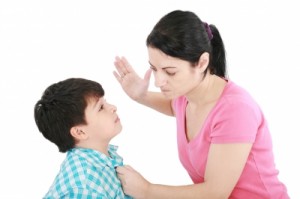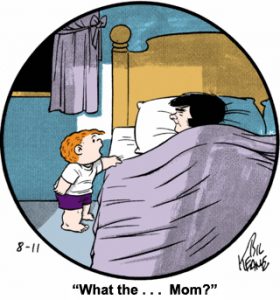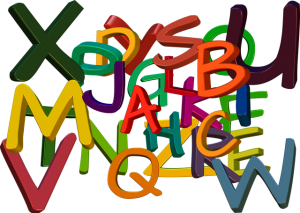Spanking—like fountain pens, hardback Webster’s Dictionaries, and control top panty hose—is one of those things that is still around, but hardly ever used anymore. According to a recent story in the New York Times, shouting has taken its place as the discipline du jour.
“Many in today’s pregnancy-flaunting, soccer-cheering, organic-snack-proffering generation of parents would never spank their children,” writes Hilary Stout. “We congratulate our toddlers for blowing their nose (‘Good job!’), we friend our teenagers (literally and virtually), we spend hours teaching our elementary-school offspring how to understand their feelings. But, incongruously and with regularity, this is a generation that yells.”
Of course I yell from time to time-usually something like “hurry up,” or “I can’t believe you forgot again”-but it’s really not my go-to behavior, as evidenced by the fact that both my husband and I can bring our son to tears by simply changing the tones of our voices.
When I get frustrated I’m more of a “mean-sarcastic-if-you-could-hear-me-you’d-be-crying-hysterically-commenter-under-my-breather” than a yeller. Of course I feel incredibly guilty about this within minutes. Probably even worse than I would have felt if I’d just yelled.
Apparently, I’m in the minority.
A study published in “The Journal of Marriage and Family,” says 88 percent of the families interviewed admitted shouting, yelling or screaming at their children in the previous year and that percentage jumped to 98 percent in families with seven-year-old children.
Wow.
I decided to do a completely unscientific survey of my own and ask my friends what they thought about this shouting as the new spanking theory.
Not surprisingly, the yellers were in the majority.
“At our house it gets really loud. I am talking really loud,” says V. “Three kids (15, 14 and 10), two dogs, two parents in a 1,600 square foot house then add in the TV and doing dishes etc. My kids often say ‘mom stop yelling’ and I don’t even think I am.”
“I yell, I scream, I swear, and mostly I seem to be talking to myself,” says T. “Sometimes I give myself a sore throat from yelling at my kids, but it seems to have no effect on them whatsoever.”
“Dude, I am a total yeller. AWFUL yeller,” admits S. “I yell myself hoarse sometimes and my entire family just ignores me. Which is as it should be.”
But does yelling really yield any results other than working out your lungs?
Some parents say it does if used strategically.
“Sometimes when my toddler is yelling in the car for no reason-and she knows when she’s doing it to push my buttons-I yell back,” says G. “Not at her, I just yell out one loud ‘Ahh!’ and it immediately stops her. She doesn’t cry, she doesn’t sulk, she’s not emotionally scarred, she just looks at me like I’m a little crazy for a second then behaves.”
“Whatever works,” agrees L. “Two of my kids don’t need yelling at. They listen and are sensitive and know the right thing to do. The third is not sensitive and is very, very stubborn with wanting to do want he wants. I’m a different parent with him. I use yelling as a last resort to snap him out of his relentless behavior.”
Never one to mince words, M, the mother of four exceptionally well-behaved children, says, “People who don’t yell or spank are usually the ones with the biggest brats!!!!” This comment touched a few nerves.
“Yelling, like anything, can be abused. I teach two and three year olds and NEVER have to yell at them to get them to listen. I am consistent and loving and firm in my day. Children do not need to be yelled at nor do adults. Yelling solves nothing,” says J.
“I have never yelled at my son and he is nowhere near a brat. I agree with J, being consistent, loving and firm has worked for me. I just think you need to act like you want your children to act,” says L. “If you’re a yeller, I guarantee your child will become a yeller. We have to be an example to our children.”
No kidding.
All of this research and I’m still not sure how to feel about yelling, other than guilty. My extremely scientific conclusion: depending on who you want to listen to, you’re either setting a terrible example for your children by yelling at them or dooming them to a lifetime of brattyness if you don’t yell at them.
I guess the best news is that however you feel about yelling at your kids, and whatever you actually do behind closed doors, you’re definitely not alone.



![By wikipedia:en:user:Sotakeit (w:Image:Cursive.JPG) [Public domain or Public domain], via Wikimedia Commons](https://lesliedinaberg.com/wordpress/wp-content/uploads/2007/01/512px-Cursive-300x205.png)
 Preparing to embark on a week of holiday leisure, I inventoried my reading material and came across the book I’ve been waiting for my whole life. It’s called
Preparing to embark on a week of holiday leisure, I inventoried my reading material and came across the book I’ve been waiting for my whole life. It’s called 
